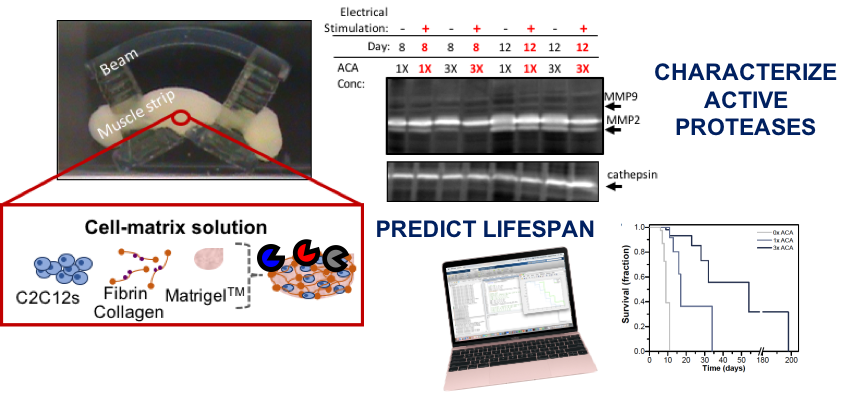When designing multi-cellular engineered living systems (M-CELS) composed of multiple cell types, protease activity due to heterotypic interactions must be controlled to prevent M-CELS failure. As we develop multi-cellular engineered living systems (M-CELS), or biological machine (“biobots), with the capabilities to dynamically sense and respond to environmental stimuli, we need to be mindful of the changes in protease profiles that we introduce when bringing multiple cell types together and how this protease activity will lead to remodeling of the extracellular environment. Proteases can remodel the matrix, which can lead to instability in the M-CELS and eventually biological machine failure, so controlling this activity is vital to creating long-lasting M-CELS. Furthermore, it would be beneficial to control proteases using endogenous inhibitors or enzymes to guide the matrix remodeling by proteins recognized by the cell types and to help prevent adverse side effects due to introducing foreign molecules into the system. Part of my thesis work focused on characterizing the protease activity in locomoting biological machines for cathepsin and matrix metalloproteinase (MMP) activities using gelatin zymography and Western blots. I characterized the protease activity in these biological machines with and without electrically stimulated contraction and under different design parameters. I showed that cysteine cathepsin are the dominate protease in the tissue destruction of these locomoting biological machines and for the first time found that cysteine cathepsins bound a novel matrix protein, fibrin(ogen). Furthermore, when these biological machines were treated with E-64, a small-molecule inhibitor of cathepsins, the biological machines had significantly less cathepsin bound to matrix protein and had significantly longer lifetimes.
- Ebics Home > Motile Bots Working Group
- Cvetkovic C, __Ferrall-Fairbanks MC__, Ko E, Grant L, Kong H, Platt MO, Bahir R. “Investigating the Life Expectancy and Proteolytic Degradation of Engineered Skeletal Muscle Biological Machines.” (* co-first author) Scientific Reports, 2017 Jun 19; 7(1):3775. doi: 10.1038/s41598-017-03723-8 PMID: 28630410
- Ferrall-Fairbanks MC*, West DM, Douglas SA, Averett RD, Platt MO. “Computational predictions of novel cysteine cathepsin-mediated fibrinogen degradation.” ( co-first author) Protein Science, 2018 Mar; 27(3):714-724. doi: 10.1002/pro.3366 PMID: 29266558
- Grant L, Raman R, Cvetkovic C, Ferrall-Fairbanks MC, Diaz GP, Hadley P, Platt MO, and Bashir R. “Long-term cryopreservation and revival of tissue engineered skeletal muscle.” (* co-first author) Tissue Engineering Part A. 2019 Jan 9. doi: 10.1089/ten.TEA.2018.0202 PMID: 30412045
- Ferrall-Fairbanks MC, Douglas SA, West DM, Platt MO. “Protease Activity in Biological Machines.” Oral Presentation at the EBICS Multi-Institutional Trainee Research Symposium, November 16, 2016
